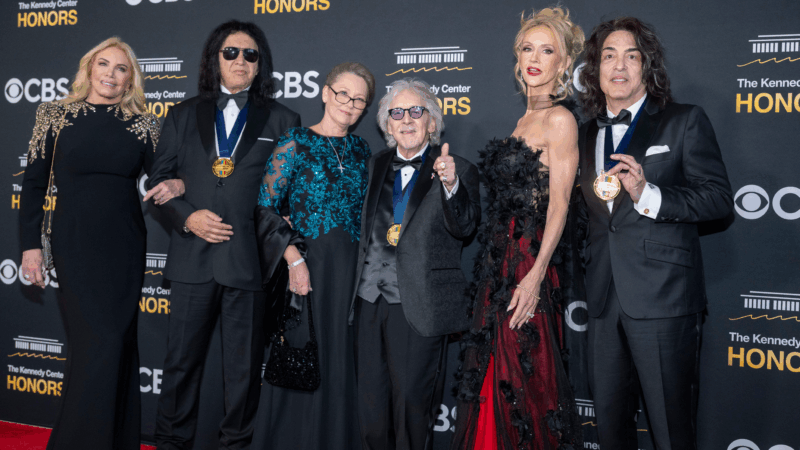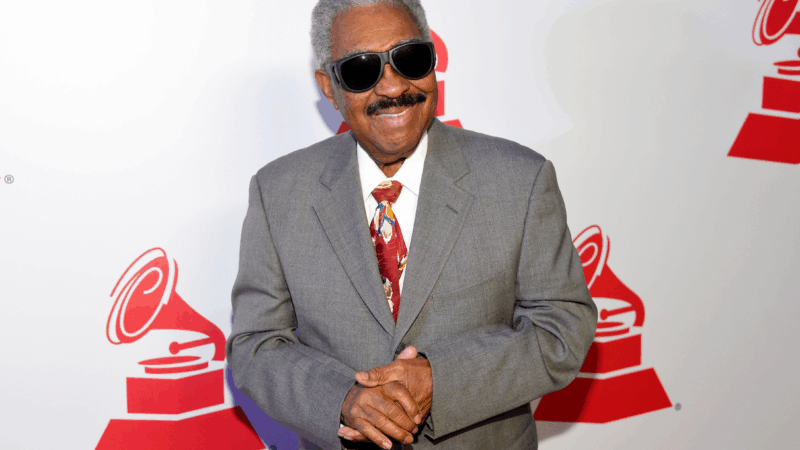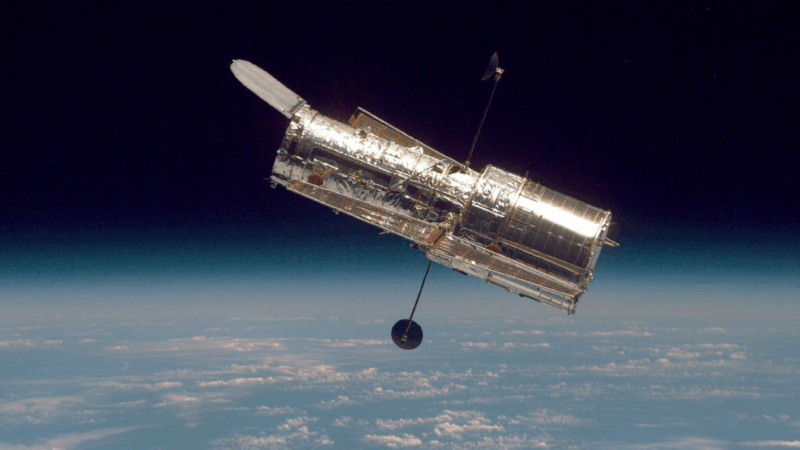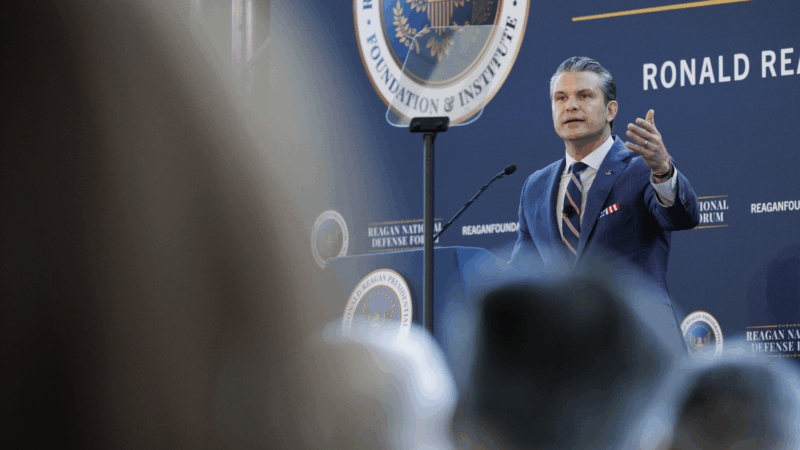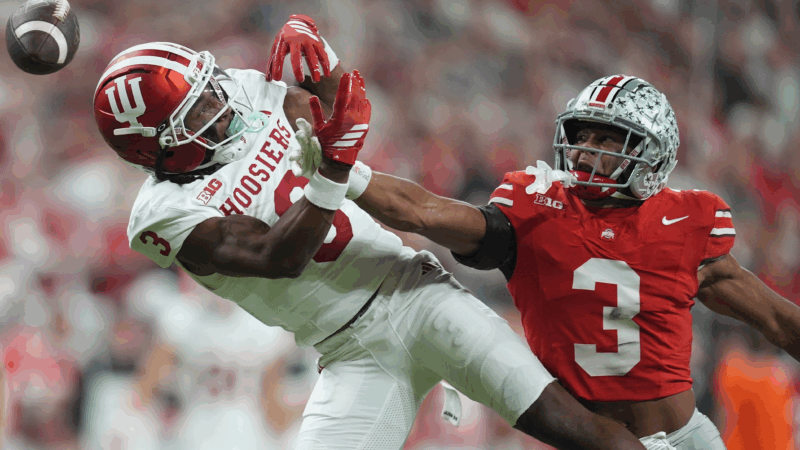This art exhibition is ‘divisive’ or ‘eye-opening’ — it depends who you ask

On any given day, there are hundreds of different exhibitions on view at the Smithsonian’s many museums. But a recent White House executive order singled out one.
The Shape of Power: Stories of Race and Sculpture at the Smithsonian American Art Museum shows 82 artworks by 70 artists, spanning some three centuries from the late 1700s to the present day.
Historical statues are put in a context that sheds new light on their meaning. Contemporary sculptures reflect on current issues.
While the executive order claims the exhibition is an example of how the Smithsonian has “come under the influence of a divisive, race-centered ideology,” visitors and critics see a collection that probes historical representation, stereotypes and identity.
We look at three works that are used to examine American perceptions of race at different points in history.
“Pioneer Woman” used to celebrate a land rush
In the 1920s, at a time when sexy, cigarette-smoking flappers were in vogue, but most monuments were for men, oil businessman E. W. Marland spearheaded a competition to honor the women “who married their men and set out with them on their conquest of the west.” He said that with this new monument, he hoped “to preserve for the children of our children the story of our mothers’ fight and toil and courage.”
The winning design by sculptor Bryant Baker was unveiled in a grand ceremony in Ponca City, Okla., in 1930. The day’s festivities included a pageant commemorating the land runs of 1889 and 1893. Tens of thousands of white settlers were allowed to claim land previously set aside by the government for Native American tribes after they were forced from their homelands in the southeast.

According to The Shape of Power catalogue, Baker’s statue of a steadfast white woman “supports the ideology of manifest destiny that claimed the land now known as the United States was ordained by God to belong to white Christians.”
Smithsonian curators were not available to comment, but the catalogue drew on research from Cynthia Prescott, author of Pioneer Mother Monuments. She tells NPR the exhibition is “trying to understand and unpack this more complicated, racialized meaning for this artwork … and reveal [it] to its audience.”
Prescott believes that this is “the core idea and impulse that the executive order is pushing back against.”
The White House did not respond to NPR’s request for comment on this story.
Using art to create a “tangible connection between people”
As a Puerto Rican who grew up poor in Philadelphia, artist Roberto Lugo has researched the removal of land that belonged to his ancestors. His sculpture DNA Study Revisited is a colorful, life-sized self-portrait made from a mold of his body when he was 100 pounds heavier than he is now.

“Many of us grew up in food deserts and places where obesity was very common because of the lack of quality of food,” said Lugo. “So when I make a piece like this, I like to allow myself to be vulnerable and let it all out, because then everybody around you allows themself also to be vulnerable.”
Lugo believes that “art has the capacity to do things that words can’t,” especially when it comes to bringing people of different backgrounds and political beliefs together. Including white people.
“I think for many people who support Trump, I think they feel disenfranchised and [that] their quality of life suffers because they’re not given opportunities because of their race,” said Lugo. “I feel as if that should be a point where we connect with one another. That’s exactly precisely how people of color feel.”
“Eye-opening” opportunity for growth
Jilian Vallade, who is Black, was visiting the art museum and said she was struck by Girl Skating, a 1906 sculpture by Abastenia St. Leger Eberle who was known for depicting poor immigrants in her lower Manhattan neighborhood. The girl glides on one roller skate, her arms stretched out, squealing in delight and fear.

The exhibition points out that at the time, Italian, Eastern European and Jewish immigrants were often not considered white.
“What many go to the South Seas to find, I found there,” Eberle was quoted as saying in 1937. “People who were just enough apart from me to act as symbols, yet close enough to feel their common humanity.”
Vallade said she hadn’t realized that white people also had been “othered” – and she found the works in The Shape of Power eye-opening and “an opportunity to see another point of view” and “interrogate your own biases.”
The Shape of Power is on view at the Smithsonian American Art Museum through mid-September.

Audio and digital story edited by Jennifer Vanasco. Audio mixed by Chloee Weiner.
Tributes, not politics, play center stage as Trump hosts the Kennedy Center Honors
President Trump said he was closely involved with picking the honorees, and on Sunday he became the first president to host the Kennedy Center awards ceremony.
Thailand launches airstrikes along border with Cambodia as tensions reignite
Both sides accused the other of breaking a ceasefire that halted fighting earlier this year. Longstanding border disputes erupted into five days of combat in July that killed dozens.
Rafael Ithier, a legend of salsa music, dies at 99
The pianist, composer and arranger spent more than six decades turning El Gran Combo into one of the premier salsa institutions of Latin America and beyond.
Light from satellites will ruin majority of some space telescope images, study says
Astronomers have long been concerned about reflections from satellites showing up in images taken by telescopes and other scientific instruments.
Defense Department is reviewing boat strike video for possible release, Hegseth says
In a speech on Saturday, Defense Secretary Pete Hegseth defended the strikes, saying: "President Trump can and will take decisive military action as he sees fit to defend our nation's interests."
Bama, Miami in, Notre Dame out and Indiana No. 1 in College Football Playoff rankings
Nobody paying attention for the past 24 months would be surprised to see Indiana – yes, Indiana – leading the way into this year's College Football Playoff.


